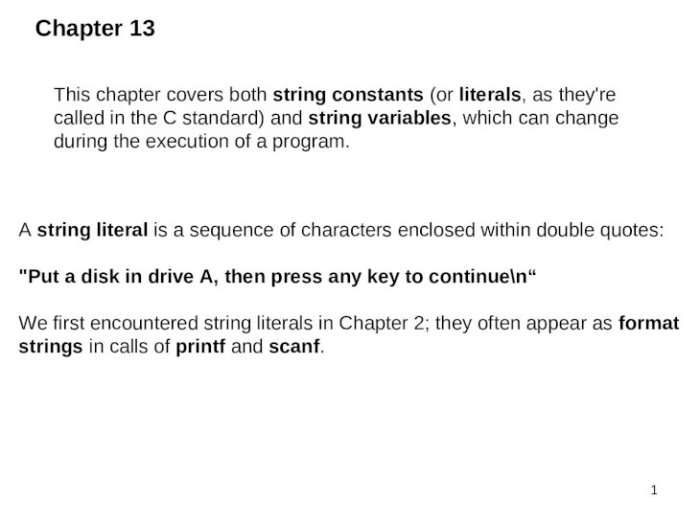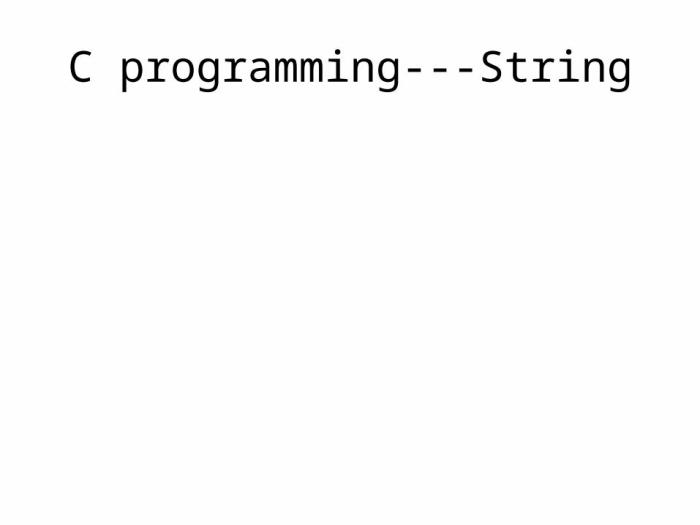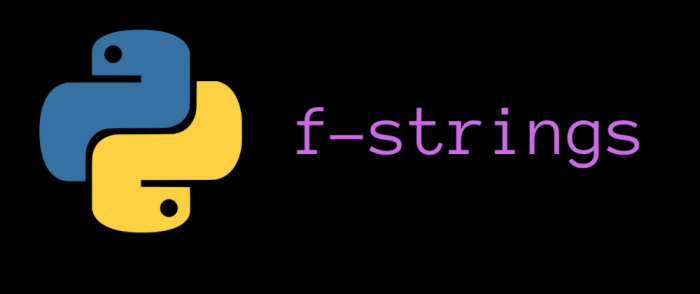In programming, a string literal must be enclosed in double quotes to represent a sequence of characters. This rule ensures that the compiler or interpreter can distinguish between string data and other types of data. Double quotes serve as delimiters, clearly marking the beginning and end of the string literal.
String literals play a crucial role in various programming tasks, such as displaying text on the screen, storing user input, and constructing dynamic content. Understanding the syntax and best practices for using string literals is essential for effective programming.
1. Definition and Syntax
A string literal is a sequence of characters enclosed in double quotes (“) that represents a constant text value in a programming language. String literals are used to store and manipulate text data, such as names, addresses, and error messages.
The syntax for a string literal is as follows:
string_literal = "sequence of characters"
2. Exceptions and Special Cases
There are a few exceptions to the rule of enclosing string literals in double quotes. For example, in Python, single quotes can also be used to enclose string literals. Additionally, in some languages, such as C and C++, string literals can be enclosed in single quotes or double quotes.
Here are some examples of valid string literals that may not require double quotes:
- Python:
'Hello, world!' - C:
"Hello, world!" - C++:
"Hello, world!"or'Hello, world!'
3. Unicode Support

String literals can handle Unicode characters, which allows them to represent text from any language. Unicode characters are represented using a hexadecimal escape sequence, such as \u0041for the letter “A”.
Here are some examples of string literals that include non-ASCII characters:
"Hello, world!""こんにちは、世界!""¡Hola, mundo!"
4. Escaping Characters: A String Literal Must Be Enclosed In Double Quotes
Escape sequences are used to represent special characters in string literals. For example, the escape sequence \nrepresents a newline character. Escape sequences begin with a backslash (\) followed by a character that represents the special character.
Here is a table of common escape sequences and their corresponding characters:
| Escape Sequence | Character |
|---|---|
\n |
Newline |
\t |
Tab |
\" |
Double quote |
\' |
Single quote |
\\ |
Backslash |
5. String Concatenation

String literals can be concatenated to form longer strings using the ‘+’ operator. For example, the following code concatenates two string literals to form a new string:
string1 = "Hello"string2 = "world!"string3 = string1 + string2print(string3) # Output: "Hello world!"
6. Best Practices
Here are some best practices for using string literals in programming:
- Use double quotes to enclose string literals unless there is a specific reason to use single quotes.
- Use escape sequences to represent special characters.
- Avoid using long string literals. If a string literal is too long, it can be split into multiple lines using the newline character (\n).
- Use string interpolation to embed variables into strings.
7. Error Handling

There are a few common errors that can occur when using string literals. These errors include:
- Invalid syntax: String literals must be enclosed in quotes.
- Unicode encoding issues: String literals must be encoded in a compatible Unicode format.
- Escaping errors: Escape sequences must be used correctly to represent special characters.
It is important to handle these errors gracefully to ensure that your program runs correctly.
8. Advanced Topics

Here are some advanced topics related to string literals:
Raw string literals
Raw string literals are string literals that are not processed by the Python interpreter. This means that escape sequences are not interpreted, and the string literal is treated as a raw sequence of characters.
Verbatim string literals
Verbatim string literals are similar to raw string literals, but they are supported in a wider range of programming languages. Verbatim string literals are typically enclosed in @ or @@ characters.
Interpolation, A string literal must be enclosed in double quotes
Interpolation is a feature that allows you to embed variables into strings. This can be done using a variety of syntax, depending on the programming language.
FAQ Corner
Why is it necessary to enclose string literals in double quotes?
Enclosing string literals in double quotes helps the compiler or interpreter identify the sequence of characters as a string, distinguishing it from other data types and preventing errors.
What are the exceptions to the rule of enclosing string literals in double quotes?
In some programming languages, such as Python, single quotes can also be used to enclose string literals. Additionally, certain special characters, such as the backslash (\), may require escaping to be interpreted correctly within a string literal.
How do string literals handle Unicode characters?
String literals can handle Unicode characters, allowing the representation of text in various languages and scripts. Unicode characters can be included in string literals using their Unicode code points or escape sequences.